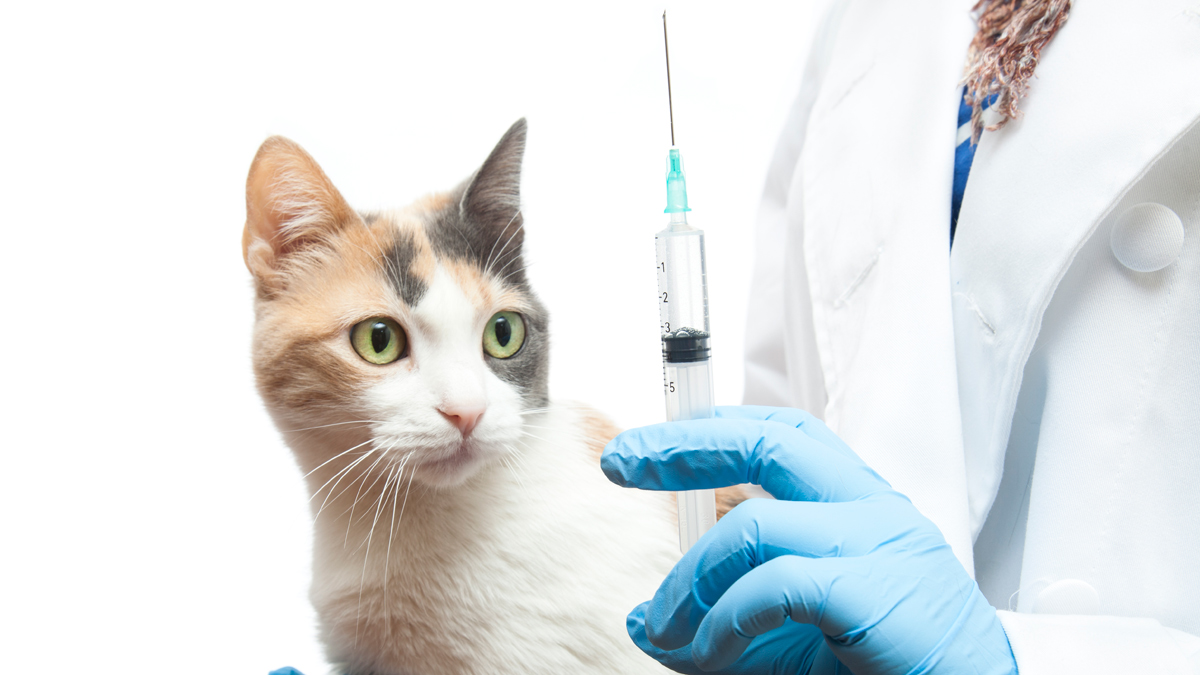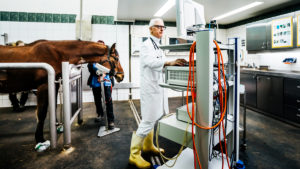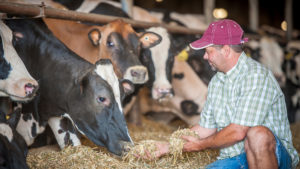Dairy and mixed clinics boost Apiam FY21 profits as the vet network continues regional expansion

Australia’s largest regional veterinary network records strong FY21 results as it capitalises on a COVID-19 increase in regional population demographics. Image: Getty
Australia’s largest regional veterinary network records strong FY21 results as it capitalises on a COVID-19 increase in regional population demographics.
Strong revenue growth in its dairy and mixed clinics have underpinned a solid FY21 performance for animal health company Apiam (ASX:AHX), with Net Profit After Tax (NPAT) up 24% to $5.1 million.
Australia’s largest regional veterinary network today released its FY21 results with growth performance in its dairy and mixed animal clinics the standout, up 23.7%.
The clinics are now the largest revenue and earnings contributor to the group, accounting for 60% of Apiam’s revenue in FY21 and delivering 44.2% EBIT growth over the period.
Apiam’s revenue in FY21 increased 6.6% to $126.2 million, with the company maintaining its gross margin momentum, delivering an 11.2% uplift in gross profit to $71.1 million.
Apiam’s reported core earnings were up 11.7% to $8.1 million, while its net cash flow from operating activities was up 82.5% supported by efficient working capital management.
Net debt as of June 30 was $37.2 million with Apiam’s operating leverage ratio of 2.0x well within its banking covenants of 3.0x.
Market cycles impact Apiam’s beef feedlot and pig segments
A reduction in the number of cattle on feed during the year because of the rebuilding of the national cattle herd impacted the performance of Apiam’s beef feedlot segments.
There were early signs of recovery in Q4 FY21 with cattle availability to feedlots increasing, with further improvements expected into FY22.
Apiam’s strategic transition to new and innovative antimicrobial and vaccine products in intensive animals has led to reduced sales of lower-margin traditional antibiotic products during the transition period in both beef feedlot and pig segments.
To reduce these impacts, Apiam has continued to invest in product and service development to commercialise offerings that will leverage its performance as these industries rebound.
Apiam capitalises on regional expansion driven by COVID-19
Veterinary markets continue to benefit from rapid changes in regional population demographics and animal ownership following the emergence of COVID-19 in Australia, which has seen more people moving away from densely populated cities.
Apiam has capitalised on the positive demographic shifts in Australia, executing its expansion strategy in FY21, driving clinic growth in targeted regional locations to capture market share.
During FY21 Apiam added two new clinics to its network in regional NSW and four new clinics in Southern Queensland.
These acquisitions delivered a material increase in the scale of the company’s Queensland operations, more than doubling Apiam’s clinic presence in the state. On 30 June 2021, Apiam also entered into an agreement to acquire Scenic Rim Vets in Queensland, which has since added two further companion and equine focused clinics to the network.
Southern Queensland is an important market in the company’s regional expansion strategy with many areas currently under-serviced by veterinarians.
Two new greenfields clinics were built during FY21, located in the rapidly growing Victorian regional towns of Shepparton and Torquay North where major housing developments are occurring.
Apiam forecasts strong outlook for FY22
Apiam managing director Dr Chris Richards told Stockhead the FY21 results were indicative of the investments made throughout the financial year and in previous years, which had set the company up for future growth.
“We will continue to execute our growth strategy through organic initiatives in rolling out new services and products along with further strategic acquisitions,” Richards said.
Apiam now has 64 clinics in the eastern states of Australia. Since the end of the financial year the company has purchased Golden Plains Group in Victoria’s Bannockburn and Harbour City Veterinary Surgery, in Gladstone, Queensland. It has also opened its new greenfield clinic in Highton in Geelong.
“Our plan is to continue to grow and capitalise on the changing population demographics where people are moving from cities to regional areas,” Richards said.
“We are building greenfields clinics in areas of high population growth where they are underserviced, or we are unable to acquire a veterinary clinic.”
This article was developed in collaboration with Apiam, a Stockhead advertiser at the time of publishing.
This article does not constitute financial product advice. You should consider obtaining independent advice before making any financial decisions.
Related Topics
UNLOCK INSIGHTS
Discover the untold stories of emerging ASX stocks.
Daily news and expert analysis, it's free to subscribe.
By proceeding, you confirm you understand that we handle personal information in accordance with our Privacy Policy.








